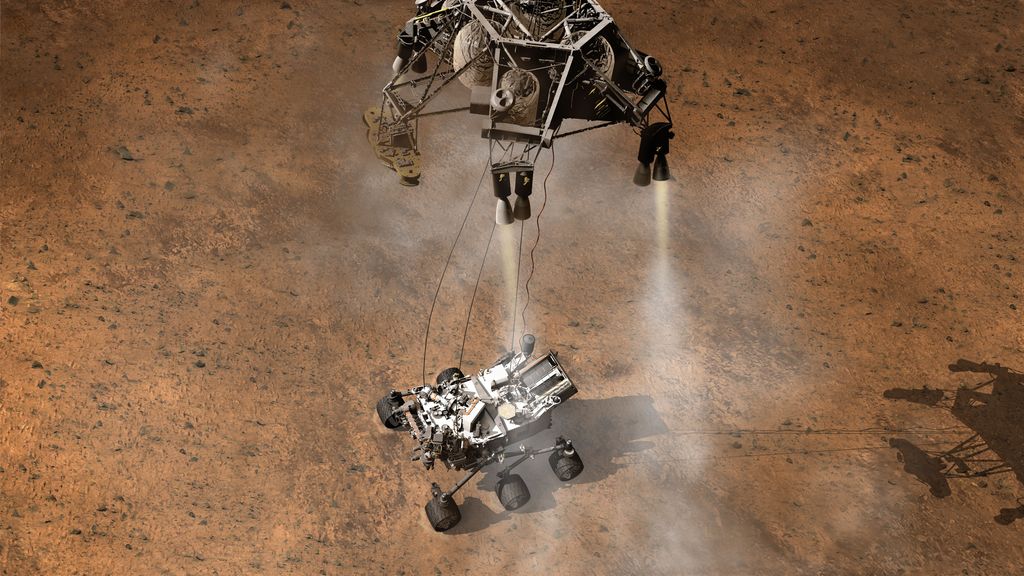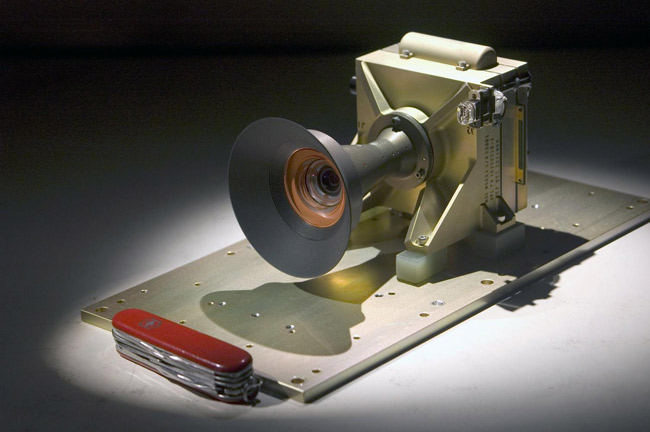Mars Rover Curiosity Will See Red Planet As Never Before

The huge NASA rover slated to land on Mars Sunday night (Aug. 5) is expected to give scientists and laypeople alike some amazing views of the Red Planet.
The 1-ton Curiosity rover, the heart of NASA's $2.5 billion Mars Science Laboratory mission, will try to determine if Earth's neighbor is, or ever was, capable of supporting microbial life. To help address this question, the six-wheeled robot is carrying 10 science instruments — and a wealth of high-tech camera gear.
Like its older Mars rover siblings Spirit and Opportunity, Curiosity comes equipped with cameras mounted on a head-like stalk (called the Remote Sensing Mast, or RSM), providing a point of view similar to what a person might experience. Unlike previous rovers, however, Curiosity’s imaging system — called Mastcam — has features that will offer a whole new look at Mars.
Developed by the San Diego company Malin Space Science Systems, Mastcam is composed of two separate cameras that sit side by side, not unlike a pair of eyes, just below the ChemCam instrument on Curiosity’s "head." Mastcam will allow color images to be captured directly. [Curiosity Rover: 11 Amazing Facts]
"It will take color in the same way as a consumer digital camera,” said Michael Ravine, advanced projects manager at Malin. "It’s as 'true' as your phone camera."
In addition, Mastcam can capture stereoscopic images in infrared, plus a whole range of wavelengths that are of importance to scientific goals.
Both cameras are fixed-length; zoom motors may be common in even the cheapest point-and-shoot digital cameras, but in a spacecraft they would have added extra fuel-guzzling mass.
Get the Space.com Newsletter
Breaking space news, the latest updates on rocket launches, skywatching events and more!
Still, one of the cameras has a focal length of 100 millimeters (4 inches) that can resolve objects a couple of inches across at 1,000 feet (300 meters). "I think that qualifies as telephoto," Ravine said.
Scientists no longer will have to assemble time-lapse footage from individual Mars images, for Mastcam also can take high-definition video. It will capture 720p color video at six frames per second.
"In the real world that’s not quite video, but compared to time-lapse images spaced 45 seconds apart, it’s close enough," Ravine said.
And Mastcam has the ability to store its own data. With 8 gigabytes of internal memory, Mastcam can hold 5,500 raw images, which can be compressed on the fly or just before transmission back to Earth.
Before Mastcam lets those on Earth see what Curiosity sees on its exploration, another state-of-the-art imaging system will help with a crucial part of the Mars Science Laboratory mission: the landing.
Curiosity’s "seven minutes of terror" landing sequence is the most complex Red Planet touchdown ever attempted, as the rover will be lowered to the surface on cables by a rocket-powered "sky crane."
This maneuver consists of many steps that must happen exactly right and perfectly in sequence, including the firing of 76 pyrotechnic devices. Adding to the difficulty is the relatively unknown terrain at Curiosity's landing site, within the Gale Crater.

Researchers have studied images of the 96-mile-wide (154 kilometers) crater taken by NASA's Mars Reconnaissance Orbiter, but small-scale features at Gale such as rocks and loose debris will have to be contended with. To help with this, Curiosity is equipped with the Mars Descent Imager, or MARDI.
A downward-facing camera mounted beneath the rover, MARDI will image the ground beneath Curiosity as the rover descends to the surface, giving an aerial view of the surrounding region, as well as after the rover touches down.
Like Mastcam, MARDI (also developed by Malin) will store high-definition RGB color images in an internal 8-gigabyte buffer. Many of its first shots are likely to be blurred due to vibration as the rover descends. Even so, MARDI should capture the first-ever video-like sequence of an actual Mars landing, Ravine said.
"We’re looking forward to seeing that," he said.
Data acquired by MARDI will be used to determine exactly where Curiosity has landed, as well as provide an "astronaut’s-eye view" of Mars – although in this case the astronaut has six wheels and weighs 2,000 pounds (900 kilograms).

Follow SPACE.com for the latest in space science and exploration news on Twitter @Spacedotcom and on Facebook.
Join our Space Forums to keep talking space on the latest missions, night sky and more! And if you have a news tip, correction or comment, let us know at: community@space.com.

Jason Major is a big fan of all things to do with astronomy and space exploration. He has a particular love of astrophotography, and he's very good at it too! You can find all of Jason's stellar photographs of the solar system on his website, Lights in the Dark, where he posts space news and images regularly.









